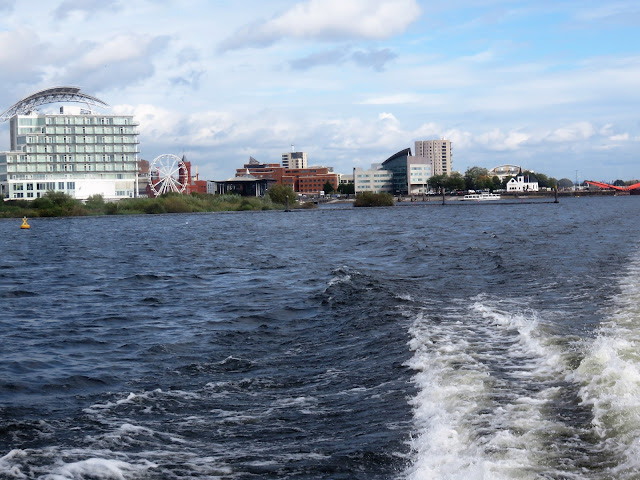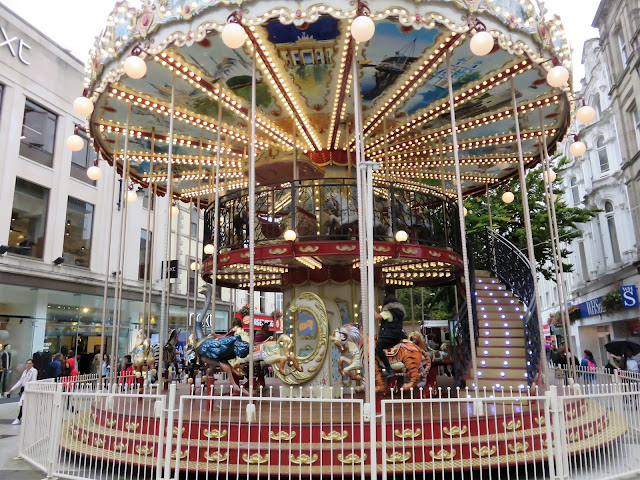September 22, 2017 - Day 11 of our trip took us to Cardiff, the capital
of Wales, a port city on
the south coast, where the River Taff meets the Severn Estuary. Although the
primary language spoken here is English, there is an effort to increase the
population of Welsh speaking citizens, and presently an estimated 11%-15% of
the population speaks both languages. Most of the public signs are in both
languages as well.
We only spent
one night here, arriving early in the day from Bath, giving us time for a short walk around Cardiff Bay, a water taxi trip to the
downtown area, and a tour of Cardiff Castle.
We saw many
castles during our time in the UK (and Ireland), in various stages of
preservation and/or restoration, with some no more than a few crumbling walls,
and others that have been painstakingly restored to resemble something close to
its original state. After a while, the stories about them start to sound the
same, the landscape between them starts to blur, and after the novelty of actually
being in a centuries-old castle wears off, the repetitiveness of the experience
can lead to castle fatigue.
That being said, Cardiff Castle was definitely an exception,
and a standout event. Although the original castle dates back to the late 11th
century, the interior rooms that we toured were designed and renovated in the
mid-19th century by John-Crichton-Stuart, Lord Bute, one of the
Marquesses of Bute. He remodeled the castle in a Gothic revival style,
lavishing the family’s extreme wealth from the coal industry on interior
design, and is considered to be amongst the most magnificent achievements of
the gothic revival.
We sent nearly
three hours at this castle, it was that remarkable. I don’t think I’ve ever
seen anything so ornate in my entire life! Every square inch of the rooms we
toured was fastidiously detailed and decorated.
We had a very knowledgeable tour guide who was able to
explain the theme in every room we visited (including bedrooms, a library, the
Arab room, a rooftop garden, a nursery for the four children, smoking room, a
banquet room, and so on). Even though at first glance one may not realize the
significance of the designs, carvings, paintings, gildings, placement of
windows, etc., nothing in any of the rooms were there by chance. Everything had
purpose and meaning and tied in to the grander scheme.































No comments:
Post a Comment